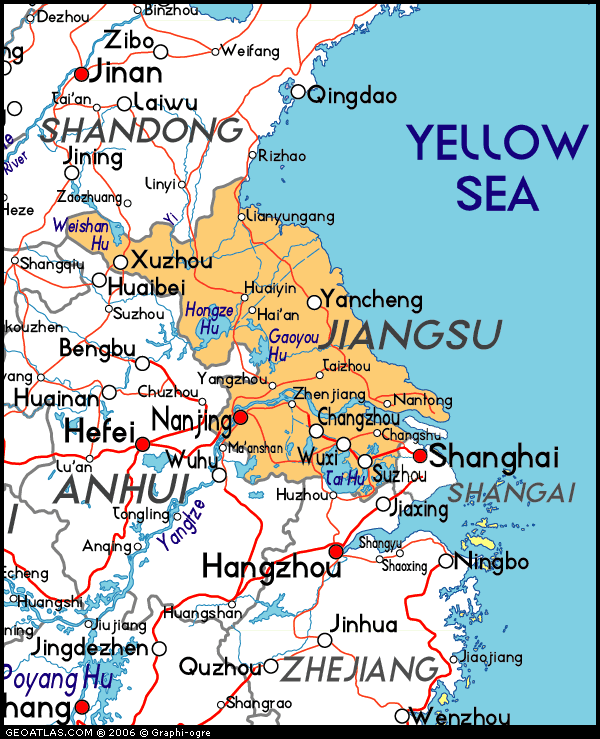|
NANJING area |
|
|
 |
Nanjing Xu garden 煦园 |
|
GPS: |
32.04405,
118.79729 |
Xu Garden is the western garden
and form a pair with the easter
garden. Currently it is
connected with the heavenly king
palace of the Taiping Heavenly
Kingdom (1851-1864) and the
president residence in Nanjing.
Xu Garden is the best preserved
south watery landscape in late
Qing Dynasty and a masterpiece
of southern watery
landscape.
Xu Garden once was served as the
imperial garden for the son of
emperor Zhu,di in Ming Dynasty.
Later Xu Garden turned into the
governmental garden for Qing
Dynasty. After the Taiping
Heavenly Kingdom made Nanjing as
capital, the Taiping Heavenly
Kingdom became one part of the
palace of Heavenly king. After
many renovations, Xu Garden
became the history relics. |
|
|
| |
|
|
|
 |
Nanjing Countryside |
|
GPS: |
na |
|
N/A |
|
|
| |
|
|
|
 |
Fuzimiao
area
南京夫子庙 |
|
GPS: |
32.02115,
118.78942 |
Nice place to spend some hours
with friends or family.
Special.un the evening, when all
is illuminated so colorful.
A
hang out area, you can enjo
food, athomosphere, people, go
little shopping. |
|
|
|
|
|
|
 |
Sun Yat-sen's Mausoleum
中山陵 |
|
GPS: |
32.06217,
118.85334 |
|
Dr. Sun Yat-sen's Mausoleum is
situated at the foot of the
second peak of Purple Mountain
in Nanjing, China. Construction
of the tomb started in January
1926, and was finished in spring
of 1929. The architect was Lü
Yanzhi, who died shortly after
it was finished. |
 |
|
| |
|
|
|
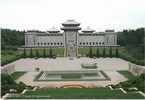 |
Yuhuatai Memorial Park of
Revolutionary Martyrs
雨花台烈士陵园 |
|
GPS: |
32.00378,
118.77921 |
|
Yuhuatai Memorial Park of
Revolutionary Martyrs is a park
and tourist site in Nanjing. It
is the former execution ground
of the Kuomintang forces during
the Republican era, but was
transformed into a memorial
ground after the Communists came
to power in 1949. |
|
|
| |
|
|
|
 |
Memorial
of Japanese Massacres
南京大虐殺紀念館 |
|
GPS: |
32.03541,
118.74248 |
|
The Memorial Hall of the Victims
in Nanjing Massacre by Japanese
Invaders is a museum to
memorialize those that were
killed in the Nanjing Massacre
by the Imperial Japanese Army in
and around the then-capital of
China, Nanjing, after it fell on
December 13, 1937. |
 |
|
|
|
|
|
 |
Purple Mountain Observatory
紫金山天文台 |
|
GPS: |
32.06592,
118.82951 |
|
Finished in 1934, the Purple
Mountain Observatory, aka
Zijinshan Observatory, is the
earliest and one of the most
famous observatories in China.
Of milestone significance, it
symbolizes the threshold of
Chinese modern astronomy. |
 |
|
| |
|
|
|
 |
Chaotian Palace 朝天宫 |
|
GPS: |
32.03498,
118.77559 |
|
The Chaotian Palace, is located
in Nanjing, China. It was built
as an imperial palace in the
Ming dynasty, and today it is
known as the Nanjing Municipal
Museum. Chaotian Palace area has
the largest preserved
traditional Chinese
architectural complex in
Jiangnan. |
 |
|
| |
|
|
|
 |
Nanjing
Yangtze River Bridge
南京长江大桥 |
|
GPS: |
32.11324,
118.74432 |
|
The Nanjing Yangtze River Bridge
is a double-decked road-rail
truss bridge across the Yangtze
River between Pukou and Xiaguan
in Nanjing, China. Its upper
deck is part of China National
Highway 104, spanning 4,588
metres. |
 |
|
|
|
|
|
 |
Linggu Temple
灵谷寺 |
|
GPS: |
32.05502,
118.86806 |
|
Linggu Temple is a Buddhist
temple in Nanjing, Jiangsu,
China. The temple was described
as 'the best Buddhist temple in
the world'. It was now
surrounded by a large park. The
temple was first built in 515
under the reign of the Liang
Dynasty (502-557). It used to
lie at the northeast foot of
Mount Zhongshan, i.e. where Ming
Xiaoling Mausoleum now locates,
since Emperor Zhu Yuanzhang
chose the place to be his
mausoleum and then the temple
was moved to the present place. |
 |
|
| |
|
|
|
 |
Confucius Temple
南京夫子庙 |
|
GPS: |
32.02064,
118.7889 |
|
The Confucius Temple in Nanjing
is built for people to worship
Confucius, a great thinker and
educator in ancient China. It is
one of the top four largest
Confucius Temples in China. The
other three are in Qufu, Jinan
Province, Beijing, and Jilin
Province. The temple is part of
Qinhuai scenic area and become a
feature of the landscape of the
ancient capital of Nanjing. |
 |
|
| |
|
|
|
 |
City Wall
and other temples
南京城墙 |
|
GPS: |
32.02587,
118.82527 |
|
Nanjing City Wall is one of the
key historical and cultural
remains of Ming Dynasty
(1368-1644) under state
protection. It is a masterpiece
of China's ancient architecture.
With an original perimeter of
about 35 kilometers, the City
Wall has a height of 14-21
meters. The footing has a width
of 14 meters. |
 |
|
|
|
|
|
 |
Sheshan Qixia Temple
摄山栖霞寺 |
|
GPS: |
32.15097,
118.95613 |
|
Qixia Temple (Temple where the
Dawn Perches) is 22 kilometers
northeast of Nanjing. It was
founded in 489 during the Six
Dynasties era, a period of
division prior to the Tang
dynasty. The present temple was
built during the late Qing
dynasty, but there are several
hundred small niche caves that
were carved into the rocks
behind the temple beginning
shortly after the temple was
founded. |
 |
|
| |
|
|
|
 |
Xiaoling Mausoleum of Ming
Dynasty 明孝陵 |
|
GPS: |
32.057,
118.82958 |
|
The Ming Xiaoling is the
mausoleum of the Hongwu Emperor,
the founder of the Ming dynasty.
Legend says that in order to
prevent robbery of the tomb, 13
identical processions of funeral
troops started from 13 city
gates to obscure the real
burying site. |
 |
|
| |
|
|
|
|
SUZHOU area |
|
|
 |
Classical Gardens of Suzhou |
|
GPS: |
na |
|
Tracing back to the 11th century
ago, Suzhou gardens reflect the
deep focus on natural beauty.
With meticulous design, they
succeed in recreating natural
landscape in miniature. Apart
from scenery of “Mountain and
Water”, the profound Chinese
history and culture are also
inlaid in the gardens. |
 |
|
| |
|
|
|
|
|
|
|
Garden of Harmony 怡园 |
|
GPS: |
31.30765,
120.6215 |
The Garden of Harmony otherwise
called Yuyuan in Chinese is a
newer private garden, which was
built in the Qing Dynasty by Gu
Wenbin, an official in the Qing
Dynasty.
The garden borrowed
all the stylistic elements of
other gardens in the area, caves
in the Lion Grove, a stone boat
resembling that in the Humble
Administrator Garden, corridor
like that at Cangliang Pavilion,
and so on. |
 |
|
|
|
|
|
|
|
Garden of Lion's Forest |
|
GPS: |
31.3208,
120.62964 |
|
Lion Grove Garden was first
constructed in 1342 AD by the
Buddhist Tianru (天如) to
commemorate his master. Among
the masses of classical gardens
of Suzhou, the Lion Grove Garden
stands out for the curiously
shaped rockeries. The name of
the garden stems from the 500
stones resembling lions in
diverse postures, sitting,
standing, sleeping, playing,
roaring, dancing etc. |
 |
|
|
|
|
|
|
|
Humble Administrator's Garden
拙政园 |
|
GPS: |
31.32433,
120.62971 |
|
Humble Administrator’s Garden is
the largest and most prestigious
garden in Suzhou. With an area
of 5.2 hectares, it is able to
include magnificent halls,
delicate pavilions, lush
flowers, zigzagging bridges,
bamboo groves and fragrant lotus
ponds, from which you could
admire the never-ending designs. |
 |
|
|
|
|
|
|
|
Flanerie Garden |
|
GPS: |
na |
|
Located one kilometre west of
the city centre. This garden
enjoys the same reputation as
the humble administrator's
garden. It extends over more
than 2 hectares: you can admire
the effects of light and shade
obtained thanks to the layout of
buildings and rockeries, or the
optical effects created thanks
to the construction of mountains
and water bodies. |
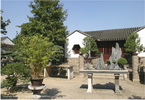 |
|
|
|
|
|
|
|
Master of the Nets Garden
网师园 |
|
GPS: |
31.29782,
120.63416 |
|
Master of the Nets Garden is a
pocket-sized garden in Suzhou.
The feature of Suzhou Gardens of
“recreating natural beauty in
miniature” is nowhere better
illustrated than the Master of
the Nets Garden. On account of
the ingenious design and the use
of the space, the garden looks
much larger than its authentic
size. |
 |
|
|
|
|
|
|
|
Master of the Nets Garden
网师园
(show) |
|
GPS: |
na |
|
na |
 |
|
|
|
|
|
|
|
Lingering Garden 留园 |
|
GPS: |
31.31526,
120.59262 |
|
Throughout its 400-plus-year
history, Lingering Garden has
changed hands several times.
Situated outside of Changmen
Gate, it was built in 1593
during the Ming Dynasty when a
retired official named Xu Taishi
commissioned it as his primary
residence, with the help of
well-known stonemason Zhou
Shicheng. |
 |
|
|
|
 |
West garden
西园 |
|
GPS: |
31.31519,
120.58712 |
|
Since 1949, West Garden
has been expanded several times
with governmental financial
support and Buddhists'
donations. Now it has
refurbished the former styles
and features and many new scenic
spots have been added to live up
to its fame 'The Holy Land of
Buddhist Altar'. |
|
|
| |
|
|
|
|
Xiyuan Temple 西园戒幢律寺 |
|
GPS: |
31.31501,
120.58764 |
|
West Garden Temple (Xiyuan
Temple) covering an area of 1.6
acres in Suzhou was constructed
in the Yuan Dynasty (1271-1368)
and features sacred temples and
classical gardens. Also called
Jiechuanglv Temple, West Garden
Temple is the largest temple in
Suzhou City which blends garden
art and temple art harmoniously. |

 |
|
|
|
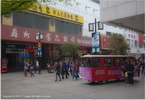 |
Guanqian Street
观前街 |
|
GPS: |
31.31137,
120.62753 |
|
This 150-year-old street is one
of the "four famous shopping
streets" in China. It is known
far and wide for its unique
blend of old and new
attractions. Gourmands and
tourists should not miss the
cuisine and culture contained on
this classic strip. |
 |
|
| |
|
|
|
 |
Hanshan temple
寒山寺 |
|
GPS: |
31.31023,
120.56807 |
|
Hanshan Temple; literally: 'Cold
Mountain Temple', is a Buddhist
temple and monastery in Suzhou,
China. It is located at the town
of Fengqiao, about 5 kilometers
west of Suzhou's old city. |
 |
|
| |
|
|
|
|
|
|
|
Puming Pagoda |
|
GPS: |
31.31032,
120.56916 |
|
In 1995, a five-storey Buddhism
pagoda as high as 138 feet
(about 42 meters) was erected
called Puming Pagoda, which then
became the symbolic building of
Hanshan temple. |
 |
|
|
|
|
|
|
 |
Suzhou Embroidery |
|
GPS: |
na |
|
N/A |
|
|
|
|
|
|
 |
North Temple Pagoda
北寺塔 |
|
GPS: |
31.32236,
120.61953 |
|
The Beisi Pagoda or North Temple
Pagoda is a Chinese pagoda
located at Bao'en Temple in
Suzhou, Jiangsu Province, China.
The base of the pagoda has an
octagonal frame, and the tower
rises nine stories in a total
height of 76 m. The pagoda was
once eleven stories tall, but
was damaged and reduced to nine
stories. |
 |
|
| |
|
|
|
 |
Panmen 盘门 |
|
GPS: |
31.28821,
120.61702 |
|
Pan Gate, Pan Men, or Panmen is
a historical landmark in Suzhou,
Jiangsu, China. It is located on
the south-west corner of the
Main Canal or encircling canal
of Suzhou. Originally built
during the Spring and Autumn
period in the state of Wu,
historians estimate it to be
around 2,500 years old. |
 |
|
| |
|
|
|
 |
Suzhou
Silk Museum
苏州丝绸博物馆 |
|
GPS: |
31.3229,
120.61821 |
|
During the Tang (618-907) and
Song (960-1279) dynasties, it
was the silk producing center;
in the Ming (1368-1644) and Qing
(1644-1911) dynasties most of
the high-grade silk produced for
the royal families was made by
silk weavers here. |
 |
|
|
|
|
|
 |
Street sellers |
|
GPS: |
na |
|
N/A |
|
|
| |
|
|
|
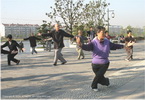 |
Tai-Chi and morning activites
太極 |
|
GPS: |
na |
|
Tai chi, short for T'ai chi
ch'üan or Tàijí quán, is an
internal Chinese martial art
practiced for both its defense
training, its health benefits
and meditation. The term taiji
is a Chinese cosmological
concept for the flux of yin and
yang, and 'quan' means fist. |
|
|
| |
|
|
|
 |
Xuanmiao
temple 玄妙观 |
|
GPS: |
31.31147,
120.62633 |
|
Xuanmiao Taoist Temple (Temple
of Mystery) is located on the
Guanqian Street in Suzhou. Built
in 276 AD, it has been renovated
many times due to damage
sustained during the wars of
past dynasties. Originally, the
temple was called Zhenqing
Taoist Temple. It was renamed
Xuanmiao Taoist Temple during
the Yuan Dynasty (1271-1368). |
 |
|
|
|
|
|
 |
Tigger hill
虎丘 |
|
GPS: |
31.33608,
120.58019 |
|
Tiger Hill is a hill in Suzhou,
China. It is a tourist
destination and is known for its
natural environment and historic
sites. The hill is so named
because it is said to look like
a crouching tiger. Another
legend states that a white tiger
appeared on the hill to guard it
following the burial of King
Helü. |
 |
|
| |
|
|
|
 |
Suzhou Railways station
苏州火车站 |
|
GPS: |
31.34065,
120.71159 |
|
N/A. |
|
|
| |
|
|
|
 |
Urban
transport |
|
GPS: |
na |
|
N/A |
|
|
|
|
|
|
 |
Suzhou Waterways |
|
GPS: |
na |
|
Dubbed “Venice of the East,” the
ancient city of Suzhou, located
in the Yangtze River Delta,
teems with enchanting canals and
winding waterways. |
|
|
| |
|
|
|
 |
Others |
|
GPS: |
na |
|
N/A |
|
|
|
|
|
|
|
TAICANG area |
|
|
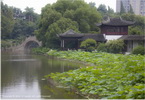 |
Nanyuan garden 南园 |
|
GPS: |
31.44235,
121.11609 |
|
This garden in the city of
Taicang was built during the
Emperor Wanli's reign in the
Ming Dynasty (1368-1644), for
Wang Xijue, a high government
official so that he could attend
to government affairs amidst in
a beautiful, aesthetic setting
of plum trees and
chrysanthemums, which also make
a reminder of the need for
integrity. |
 |
|
| |
|
|
|
|
|
|
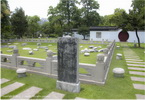 |
Taicang garden
弇山园 |
xxxxxxxxxxxxx |
GPS: |
31.44581,
121.1013 |
|
N/A |
|
|
|
|
|
|
|
TONGLI area |
|
|
 |
Tongli Ancient Town 同里古镇 |
|
GPS: |
31.15332,
120.71967 |
|
Built in the Song Dynasty
(960–1279), Tongli Ancient Town
is nestled to the east of
Beijing–Hangzhou Grand Canal, by
Taihu Lake.It is one of the six
famous ancient towns to the
south of the Yangtze River along
with Zhouzhuang, Yongzhi,
Xitang, Wuzhen, and Nanxun. |

 |
|
|
|
|
|
|
WUXI area |
|
|
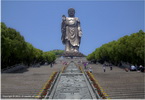 |
Lingshan
- Grand Buddha 灵山大佛 |
|
GPS: |
31.42418,
120.10085 |
|
The Grand Buddha is located at
the south of the Longshan
Mountain, near Mashan, town of
Wuxi, Jiangsu Province, People's
Republic of China. It is one of
the largest Buddha statues in
China and also in the world. The
Grand Buddha at Ling Shan is a
bronze Amitabha standing Buddha
outdoor, weighing over 700 tons. |

 |
|
|
|
|
|
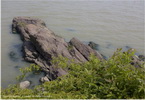 |
Wuxi Longtouzhu Park
太湖龙头渚 |
|
GPS: |
31.37641, 120.07555 |
|
Longtouzhu is a peninsula formed
by the Daeshan Mountain into the
Taihu Lake. It resembles a
dragon lying in the blue water
of Taihu Lake, so the name is
called the dragon head(Longtou).
There are three scenic spots to
enjoy the view. The Longmen
Observation Deck and the
Wanglong Pavilion, and one in
the lake, can only truly
appreciate the momentum of the
Qinglong lying wave. The
location of Wanglong Pavilion is
suitable for viewing the dragon
head. |
|
|
|
|
|
|
 |
Shanjuan
Cave 善卷洞 |
|
GPS: |
31.29744,
119.67351 |
|
Shanjuan Cave is the oddest
among the "three odd caves" in
the area and the other two are
Zhanggong Cave and Linggu
Cave.Inside Shanjuan Cave is a
world of stalactites, stone
pillars and rock formations. It
is about 800 meters in length
and covers an area of 5,000
square meters, and could
accommodate more than 1,000
people. |
|
|
|
|
|
|
 |
Taihu
Lake 太湖 |
|
GPS: |
31.25795,
120.2051 |
|
Taihu Lake is just like a bright
pearl set in the Yangtze River
delta. It crosses Jiangsu and
Zhejiang provinces, where 48
islets of different sizes and 72
peaks and peninsulas along the
lake combine to form a panorama
of great natural beauty. |
 |
|
|
|
|
|
 |
Plums garden
荣氏梅园 |
|
GPS: |
31.55374,
120.22442 |
|
Plum Garden (Meiyuan Garden) can
be dated back to 1912. It was
founded by the Rong’s brothers
(Rong Zongjing and Rong
Desheng). Plum Garden is named
after varied types of plum trees
been planted inside. |
 |
|
| |
|
|
|
|
|
|
|
ZHOUZHUANG area |
|
|
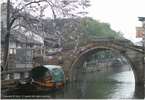 |
Zhouzhuang ancient water town
周庄古镇 |
|
GPS: |
31.12639,
120.84525 |
|
Zhouzhuang is an ancient town
where abounds with rivers and
lakes. It is thought by many to
be the best water town in China.
This ancient town has a history
of more than 900 years old with
many houses built in the Ming
and Qing Dynasties. |

 |
|
| |
|
|
|









